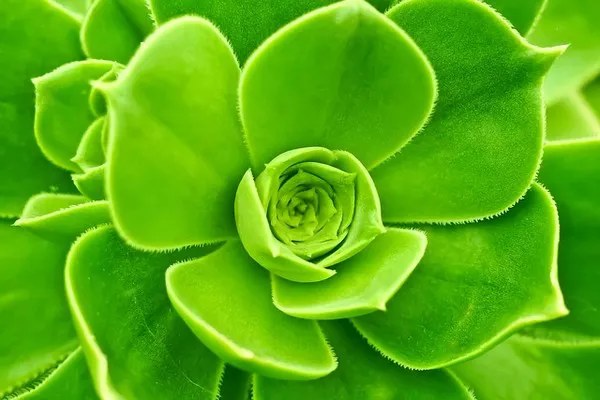Succulents have surged in popularity over the years, adorning homes, offices, and gardens with their unique charm and resilience. These water-storing plants are not only visually appealing but also relatively easy to cultivate. In this comprehensive guide, we will explore the art of planting succulents, covering everything from choosing the right pot and soil to providing the ideal growing conditions.
Selecting the Right Container
The first step in successfully planting succulents is choosing an appropriate container. Succulents are known for their shallow root systems, so selecting a container with proper drainage is crucial to prevent waterlogging. Terra cotta pots, with their porous nature, are excellent choices as they allow excess moisture to evaporate.
Ensure that the container has drainage holes at the bottom to facilitate proper water drainage, preventing root rot and other issues associated with overwatering. Additionally, consider the size of the pot in relation to the size of the succulent. A container that is too large may retain excess moisture, while a too-small container can restrict the plant’s growth.
Choosing the Right Soil
Succulents thrive in well-draining soil that prevents water from pooling around their roots. Commercial succulent and cactus mixtures are readily available, but you can also create a custom blend. A simple mixture of potting soil, perlite, and coarse sand in equal parts provides an ideal growing medium.
The potting soil provides essential nutrients, while perlite and sand enhance drainage. The sandy texture prevents compaction, allowing the roots to breathe and preventing waterlogged conditions. Aim for a soil pH between 6.0 and 6.5 for optimal succulent growth.
Preparing the Pot
Before planting, ensure the chosen container is clean and free from any debris. Sterilizing the pot helps prevent the introduction of pathogens that could harm the succulent. You can sterilize the container by washing it with a diluted bleach solution and allowing it to air dry thoroughly.
Once the pot is prepared, fill it with the well-draining soil mixture, leaving about an inch or two of space below the rim. This space allows for watering without the risk of overflowing and provides stability for the succulent.
Choosing and Planting Succulents
With a vast array of succulent species and varieties available, selecting the right plants for your container can be an exciting part of the process. Consider factors such as size, color, and texture to create an aesthetically pleasing arrangement. Additionally, choose succulents with similar water and light requirements to ensure they thrive together.
When planting, gently remove the succulent from its nursery container, taking care not to disturb the roots excessively. If the roots are tightly wound, gently tease them apart to encourage outward growth. Place the succulent in the center of the pot, adjusting the soil level as needed to maintain the original planting depth.
Watering and Establishing Routine
Watering is a critical aspect of succulent care, and it’s essential to strike the right balance. While succulents are known for their ability to withstand drought, they do require regular watering, especially during their active growing season. Water the plants thoroughly, allowing excess water to drain from the bottom of the container.
It’s crucial to let the soil dry out between waterings to prevent overwatering, a common cause of succulent issues. Stick to a consistent watering schedule, adjusting the frequency based on factors such as temperature, humidity, and the specific needs of the succulent species.
Providing Adequate Light
Succulents are sun-loving plants that thrive in bright, indirect light. Place your succulent container in a location that receives at least six hours of sunlight per day. South-facing windows are ideal, but if natural light is limited, supplement with grow lights designed for succulents.
Rotate the container periodically to ensure even light exposure on all sides of the succulents, preventing them from leaning towards the light source. Be mindful of intense, direct sunlight, as some succulents may scorch if exposed to prolonged periods of extreme heat.
Fertilizing Succulents
While succulents are not heavy feeders, providing them with a balanced fertilizer during the growing season can enhance their overall health and appearance. Choose a diluted, water-soluble fertilizer formulated for succulents and apply it every 4-6 weeks during the growing season.
Avoid fertilizing during the dormant winter months, as succulents generally do not require additional nutrients during this period. Always follow the manufacturer’s instructions for application rates to prevent overfertilizing, which can lead to salt buildup and harm the plants.
Monitoring and Troubleshooting
Regular monitoring is crucial for identifying and addressing potential issues before they escalate. Keep an eye out for signs of pests, such as aphids, mealybugs, or spider mites. If detected, treat the infestation promptly with natural insecticides or horticultural soap.
Inspect the leaves for discoloration, as this may indicate nutrient deficiencies. Adjust the fertilizer application or soil composition accordingly. Trim dead or damaged leaves to maintain the succulent’s overall health and appearance.
See Also What Are The Types Of Non Flowering Plants
Conclusion
Planting succulents is an enjoyable and rewarding endeavor that brings natural beauty to any space. By carefully selecting the right container, soil, and succulents, and providing proper care in terms of water, light, and nutrients, you can create a thriving succulent garden. Follow these guidelines, and soon you’ll be enjoying the unique, low-maintenance beauty of succulents in your home or garden.


